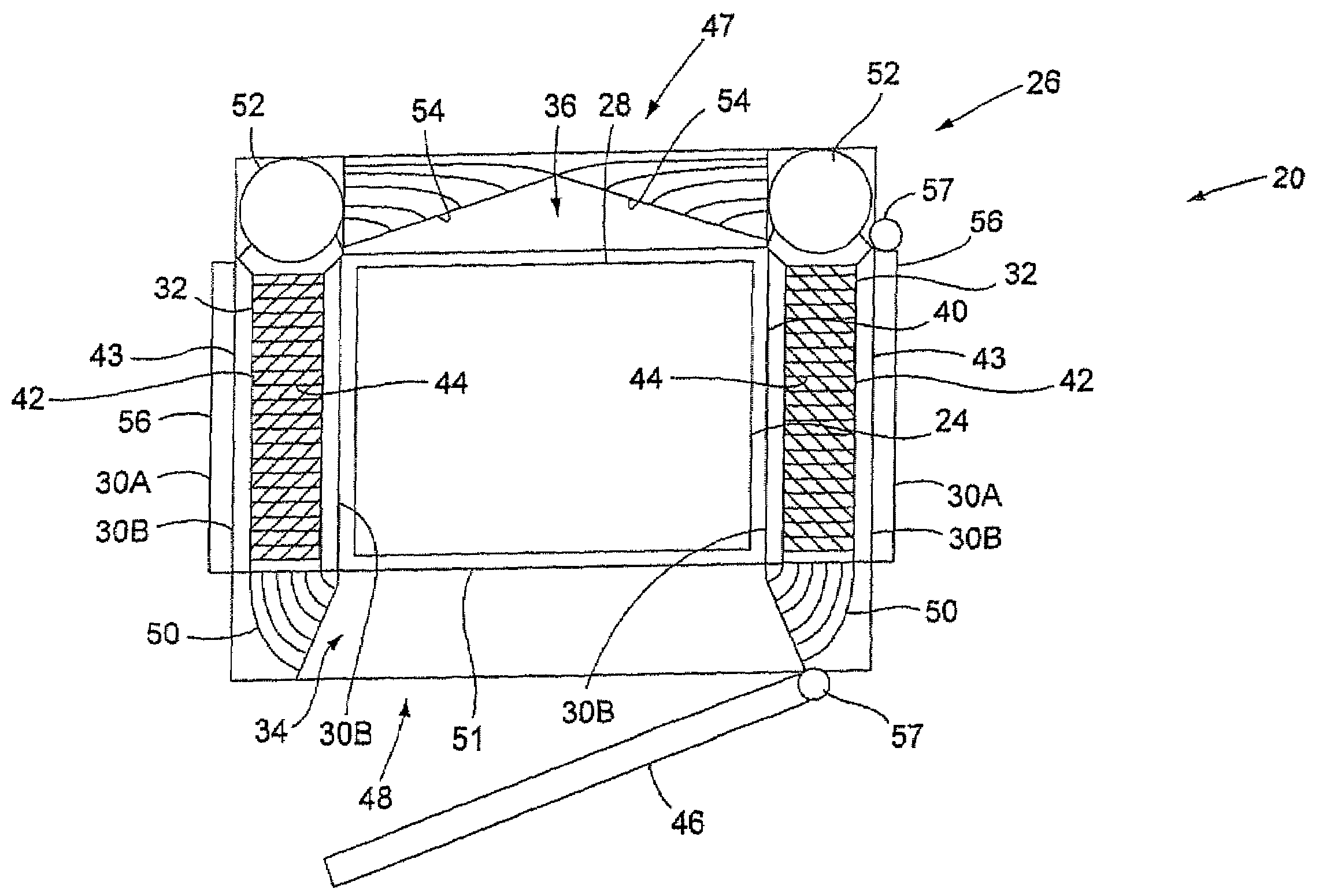Cooling enclosure for maintaining commercial-off-the-shelf (COTS) equipment in vehicles
a technology for cooling enclosures and cots, which is applied in the direction of electric apparatus casings/cabinets/drawers, lighting and heating apparatus, instruments, etc., can solve the problems of difficult integration of cot equipment with systems designed to meet military specifications, difficult to efficiently provide the proper environment for cot equipment, and high cost of even slight modification. achieve the effect of reducing pressure drop
- Summary
- Abstract
- Description
- Claims
- Application Information
AI Technical Summary
Benefits of technology
Problems solved by technology
Method used
Image
Examples
Embodiment Construction
[0026]Referring to the accompanying drawings in which like reference numbers indicate like elements, FIG. 1 illustrates an exemplary aircraft that is constructed in accordance with the principles of the present invention.
[0027]More particularly, FIG. 1 shows a model 747 commercial aircraft 10 that is available from The Boeing Company of Chicago, Ill. The aircraft 10 is exemplary and could be any aircraft either civilian, military, or otherwise. FIG. 1 also shows a lower lobe 12 of the aircraft 10, an avionics bay 14, several electronic equipment racks 16, numerous pieces of electrical equipment 18, and an equipment enclosure 20 of the present invention. The lower lobe 12 includes the avionics bay 14 in a convenient location near the crew cabin so that the crew can access the electrical equipment 18 that resides in the avionics bay. The avionics bay 14 is maintained at a pre-selected temperature by an environmental control system (ECS) of the aircraft 10. The ECS system supplies fres...
PUM
 Login to View More
Login to View More Abstract
Description
Claims
Application Information
 Login to View More
Login to View More - R&D
- Intellectual Property
- Life Sciences
- Materials
- Tech Scout
- Unparalleled Data Quality
- Higher Quality Content
- 60% Fewer Hallucinations
Browse by: Latest US Patents, China's latest patents, Technical Efficacy Thesaurus, Application Domain, Technology Topic, Popular Technical Reports.
© 2025 PatSnap. All rights reserved.Legal|Privacy policy|Modern Slavery Act Transparency Statement|Sitemap|About US| Contact US: help@patsnap.com



